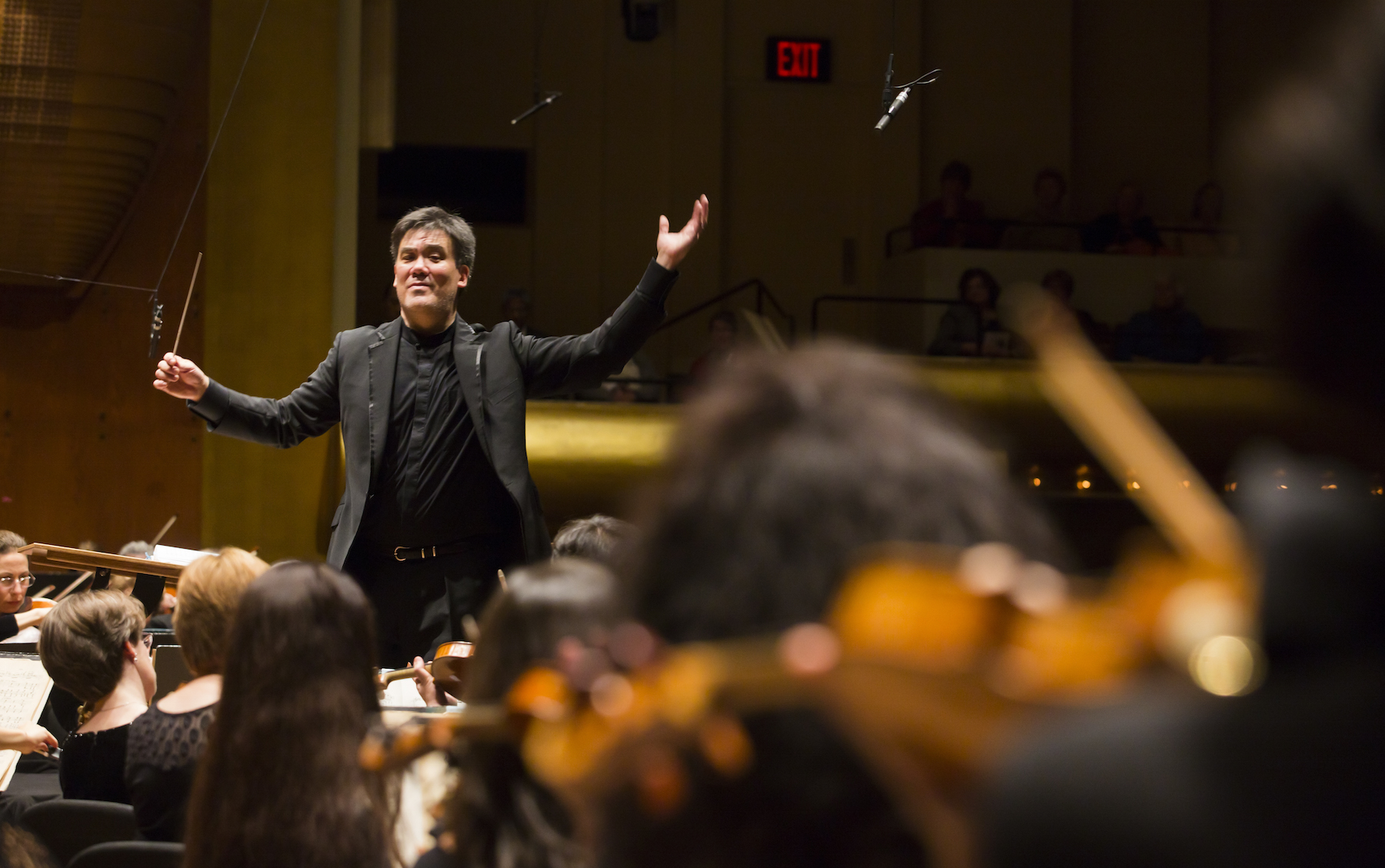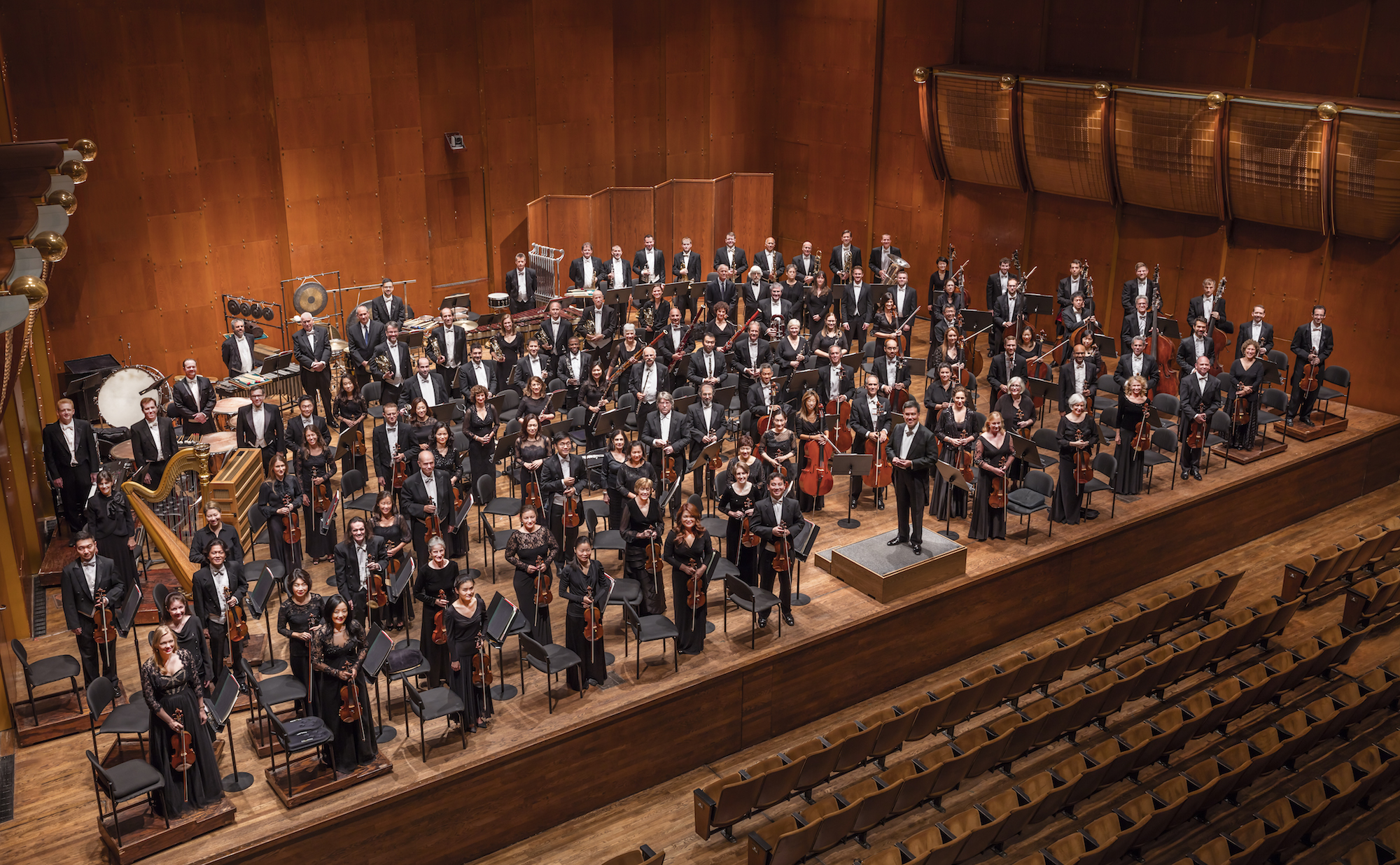
This article appeared in the September 2012 issue of the BBC Music Magazine.
An ambitious project to resurrect the works of Danish composer Carl Nielsen is just one of the many innovations of the New York Philharmonic’s music director Alan Gilbert. Brian Wise meets New York’s musical visionary.
With all the ways that the New York Philharmonic has seized the news headlines in 2012 – a mobile phone halting a performance of Mahler, players quitting or retiring, a massive concert in the hangar-like Park Avenue Armory – you might think that a recording cycle of Carl Nielsen’s music for a small Danish label would be fairly low among the orchestra’s priorities.
The Danish composer’s six symphonies and three concertos are often viewed as post-Romantic curiosities, tagged with odd nicknames (‘The Inextinguishable’) and overshadowed by fellow Nordic composer Jean Sibelius. For a famously brash orchestra known for its Beethoven, Mahler and Tchaikovsky, this corner of the repertoire may seem too arcane to merit significant advocacy. But Alan Gilbert, who is entering his fourth season as the Philharmonic’s first New York-born music director, believes he can raise Nielsen’s visibility where his predecessors could not. ‘Leonard Bernstein was most famously excited by the music of Nielsen,’ says Gilbert during an interview in the same modest Lincoln Center office once used by Bernstein. ‘But it doesn’t seem to have quite taken hold. I’m not sure why because it’s eminently approachable and understandable music.’
The Philharmonic is one of a handful of orchestras recording Nielsen’s symphonies and concertos (for violin, flute and clarinet) in the lead-up to the 150th anniversary of the composer’s birth in 2015. This represents the first big push since the Nielsen revival of the 1960s, marked by Bernstein’s recording of the Third and Fifth Symphonies. But that boom never quite took hold, however, aside from a smattering of releases by Eugene Ormandy, Jascha Horenstein and Herbert Blomstedt.
Gilbert believes audiences will follow his passion, even as it shares a crowded agenda at the Philharmonic. ‘Even on the first hearing it’s obviously right out of the central European symphonic tradition,’ Gilbert says of the symphonies. ‘What I like about it is it takes that tradition and makes something very unique. I don’t know if it’s Danish or if it’s just Nielsen himself but there’s kind of a quirky persona that speaks through this essentially traditional symphonic form.’
The first release in ‘The Nielsen Project’ is due out in October on the Dacapo label and will feature live concert recordings of the Second and Third Symphonies. The Third, recorded in June at Avery Fisher Hall, showed why Nielsen’s music can be so strange but also compelling: it opens with big unison chords set out in increasingly asymmetrical rhythms which stumble into a kind of drunken waltz. Later, a baritone and a soprano deliver a vocalise while standing in the midst of the orchestra. Nielsen himself played in the second violin section during the premiere of his First Symphony, in 1894. ‘Nielsen was an extremely well- schooled musician and fascinating person from what I understand,’ says Gilbert. ‘He was apparently well known for doing impressions and dressing up as different characters. There are actually some photographs of him in various poses and various outfits – including dresses. That kind of desire to express different personalities and characters comes through in his music.’
The 45-year-old Gilbert has been on a Nielsen campaign since serving as chief conductor of the Royal Stockholm Philharmonic Orchestra, from 2000 to 2008. His Nordic orientation quickly carried over in New York. He named the Finn Magnus Lindberg as composer in residence and opened his inaugural concert in 2009 with the composer’s piece EXPO. Recently he led a new song cycle by the Swedish composer Anders Hillborg, with Renée Fleming as soloist.
Gilbert has also shown more sympathy towards European modernists than US composers, although this season marks a change with the arrival of Christopher Rouse as the next composer in residence. Now starting the fourth year in a five-year contract, Gilbert leads a 170-year-old institution that faces many of the same uncertainties that confront other US orchestras. Musicians have a new two-year contract, but hefty pension liabilities remain. A renovation of the widely scorned Avery Fisher Hall is planned in the near future, which will displace the ensemble for a long period. And Matthew VanBesien, the orchestra’s new executive director, hired from the Melbourne Symphony Orchestra, is unknown in New York.

The Philharmonic gets generally high marks for its sound and character, but critics have prodded Gilbert to follow his more adventurous instincts – even as he has moved the programming beyond the staidness of his predecessor Lorin Maazel. Close observers say that the Philharmonic remains a conservative institution in many respects and Gilbert must balance his more daring nature with the tastes of an old-school subscriber base.
Even so, Gilbert has whipped up a bit of visual spectacle for the Philharmonic’s season-closers since arriving, with staged operas – Ligeti’s Le Grande Macabre in 2010, and Janácek’s The Cunning Little Vixen in 2011 – that brought clever, colourful costumes and sets into Avery Fisher Hall. This year, the spectacle was the most audacious yet: an evening of surround-sound works that included a scene from Mozart’s Don Giovanni, pieces by Boulez and Ives, and one of the summits of the avant-garde, Stockhausen’s Gruppen. The event took place in the 55,000-square-foot Drill Hall of the Park Avenue Armory in Manhattan.
‘It was an experiment and one that generally went well,’ says Gilbert. He was especially satisfied with having pulled off Gruppen – a 1957 work that calls for three orchestras, each with its own conductor, arrayed in a horseshoe around the audience. Gilbert acknowledged that the Act I finale from Don Giovanni – in which the cast sang from all corners – wasn’t entirely successful given the Armory’s large acoustics. ‘We’ve learned a lot and that was another reason why we wanted to do it because I think we have some exciting vocal projects planned for the future in the Armory and now we’ll know much better how to deal with those.’
But besides being a logistical feat, the project had true event status in a city where a daily commute can be an event. The two performances were sold out weeks in advance and they drew a younger audience. ‘What I hoped would happen is happening – that there is kind of an identity and trust with the audience that is getting stronger,’ says Gilbert. ‘That’s simply because we do something people are going to be interested in taking part in, trying it out and taking the risk.’
The Philharmonic says it is undertaking audience research to understand who attends these big season-ending concerts, and what else they might be attracted to. That might include next June’s Stravinsky’s Petrushka, featuring puppets, dancers, live animation and video, in a production created by Doug Fitch.
These events represent a vastly different image of the Philharmonic experience than one that made global headlines earlier this year, when a subscriber’s mobile phone went off during the delicate final pages of Mahler’s Ninth Symphony. In the heat of the moment, Gilbert made a nearly unprecedented move: he stopped the performance. The ringing kept on going, however, and audiences were soon baying for blood. ‘Kick him out,’ they screamed, ‘Go home!’. Gilbert turned around and said, matter-of-factly, ‘We’ll wait.’ Days of blanket news media coverage followed.
‘I was surprised and not a little fascinated that it struck such a chord,’ says Gilbert, now admitting he enjoyed the story. ‘It’s actually an encouraging sign that people find it so blasphemous, almost, to interrupt a concert. It’s like something went against nature. I think it’s actually a good sign for what we do and how people view what we do.’
